Best classic daily drivers for 2026
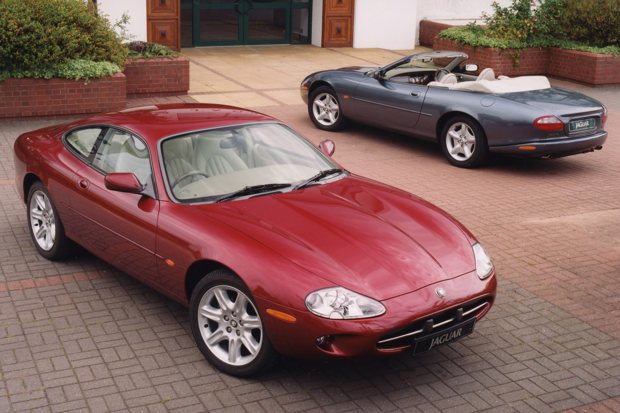
Driving a classic car lets you stand out and show your personality without showing off. And with more than a century of designs to fall back on there's plenty of choice for all tastes.
We can't blame you for looking at the monthly PCP prices, deposits, and astonishingly similar range of modern cars on offer in 2025 and wondering if there is another way. New cars are great for fixed costs and reliability, but those costs have risen dramatically since 2020 and the range of vehicles appears to have coalesced into varying sizes of slightly large, wide SUV.
If you're longing for the variety and visually breathtaking designs of the 20th century, there's good news. The classic car market remains active, well-stocked and if anything, rather safer than it used to be. Digital photography, online MoT records and greater knowledge overall means buying a filler-laden 'investment' is harder to do without knowing what you're getting into.
With the modern classic era creeping into 21st-century models, getting a safe and reliable daily driver that's a bit different is not hard - and it can even be considered environmentally friendly keeping an older car going so long as it's in good mechanical condition. But modern tech helps the older cars survive too, with upgraded lights, seals, brakes and even full EV conversions on the cards.
Best classic daily drivers |
Mercedes 190E (W201) - best urban-cool classic

- Narrow body, large windows and a three-pointed star to guide you
- The small car that delivered big Mercedes build quality and refinement
- A cheap, and dependable classic with understated class for any city
It's more than 40 years since Mercedes introduced a new era of engineering and a new, compact class of three-pointed star in the form of the W201, best known as the Mercedes 190E.
The new platform shaped every subsequent Mercedes until the wholly-novel W168 A-Class, donating scaled-up versions of its clever suspension to the E-Class, S-Class and even the SL and SLK. Retaining a classic style from the outset, its aerodynamic prowess was concealed rather than defining the shape and it played to Mercedes' other strengths of longevity, mild austerity and build quality.
What it lacked in showroom appeal, it made up for in wallet-friendly running costs and an almost timeless style that changed very little over a decade before the W202 C-Class replaced it.
In 2025 the 190E is easily overlooked as 'a cheaper W124 E-Class' at a glance. Drive one and you realise it's a masterpiece of miniature presence. Somehow, this narrow and nimble saloon carries off the air of a robust large executive car without trying to shout about it. The stainless grille and badge retain their shine for instant style in the city at night, while the flat sides make it incredibly easy to navigate residential streets and city centres.
Drive a Mercedes 190E and not everyone will spot that it's a 40-year old classic car, but visit any showroom from any brand and you won't find anything like it. The phrase small, but perfectly formed, was made for this Mercedes. Parts are easy to find and (unless you go for the Cosworth-tuned 2.3/2.5-16V) you'll find it easy to afford a good example, or a cheap, usable project worth spending money on later.
Toyota RAV4 (1994) - best classic SUV

- Genuinely clever suspension and design for a sharp-handling 4x4
- Small body and cute '90s styling stand out in modern traffic
- Remarkably capable off-road, pleasant and relaxing on-road
You can't move for SUVs now, but the template was set in the 1980s with the Jeep Cherokee, Volkswagen Golf Country and Toyota RAV4. Of those three cars, the Toyota RAV4 is by far the best one to choose as a daily driver now, with plenty of survivors to choose from (particularly the later, longer five-door model) and good parts availability.
While the VW Golf Country was a niche-market jacked-up AWD car and the Jeep Cherokee was a slightly-refined, weight-reduced classic 4x4, the Toyota RAV4 was designed as a new model.
Its clever suspension delivered off-road agility alongside on-road handling with ride quality far ahead of classic small 4x4s such as the Suzuki Vitara. It's a design classic, one that sparked a revolution with rivals from Honda (HR-V), Land Rover (Freelander) and the evolution of the Nissan Qashqai.
Although it's the template for modern cars, it's nothing like them to drive. Light, minimalist and fun, the RAV4 highlights what has been lost in each compromise and marketing-lead revision – as Toyota's own successors got bigger, offered two-wheel drive and became compromised themselves. Get one while you can and prices are low.
Volkswagen Golf GTI Mk2 – best hot hatch
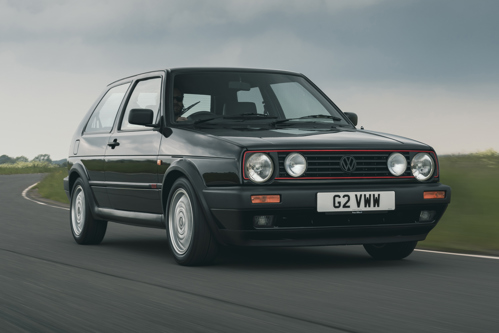
- Becoming rare, but still very easy to buy and maintain
- Very reliable mechanically if it's been decommissioned well
- Rare versions are becoming expensive and cherished show cars
For years, choosing a Volkswagen has been a safe route to a reliable classic car and like the VW Beetle before it, the VW Golf has proven popular, adaptable and globally appealing.
However, Britain's association with the VW Golf is less about the little car for the people and more about power to the people. After years of high-strung rally derivatives and unreliable MGs, the three letters G, T, I, ensured the Golf's place in history for '80s consumer culture.
The I – for injection – along with traditional German attention to quality ensured the Golf won respect for its unflinching reliability and impressive fuel economy. A late Mk 2 model can easily return over 45mpg in mixed driving.
As long as the car is serviced (the gearboxes can be weak if neglected) they will easily hit 300,000 miles before needing a rebuild. Most get modified and upgraded well before then, so getting hold of and driving a straight, original Golf GTI will stand out from the start.
For common-sense daily use, get a big-bumper five-door GTI 8V. If you want more performance, the 16V offers a bit of extra poke, but you might prefer to find a modified one with a later 1.8 20V or Turbo transplant and suitably upgraded suspension, brakes and transmission. Nobody said your daily driver classic had to be standard...
Read our Honest John Classics Volkswagen Golf GTI Mk2 review
Mercedes SLK - best affordable small GT
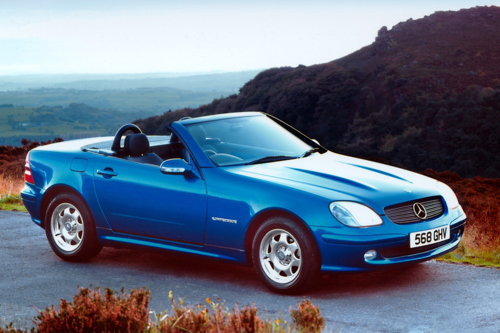
- Almost criminally cheap for a classic roadster approaching 30 years old
- Folding hardtop means year-round comfort.
- Robust engines and comfortable cabin. Just keep an eye on the rust...
Mercedes' classic coupes – the CE, SLC and SL – are now becoming investment-grade classics. And while the cars are 100% usable every day, the risk of accidents or minor damage mean you're likely to want to preserve the car for special occasions.
Don't worry – there's a classic Mercedes design that is practically disposable in financial terms, yet offers all the innovation, engineering and refinement that owners of two-seater Benzes have always appreciated.
Launched in 1996, the Mercedes SLK (codenamed R170) is inextricably linked to the original SL roadsters - sharing a wheelbase and strict-two seater configuration with the classic Mercedes 190SL and some aspects of style with the iconic Mercedes Pagoda SL.
It was designed to get away from the bloat of the 1988 Mercedes SL (R129) and restore some affordability and fun to Mercedes' roadsters. Solving the problem of where to store the hardtop by making it fold into the 355-litre boot resulted in a practical, weatherproof and quick two-seater with styling that has aged very well.
The cars themselves have not all aged well though. Mercedes went to new paint processes and a programme of cost reduction during the 1990s and SLKs had a tendency for wings and arches to show rust early giving the cars a bad reputation.
However, with the youngest models over 20 years old they have survived much better than a typical '70s Mercedes did in Britain. Many cars were rectified under an extended warranty, but those repairs are now due repairs again.
You can choose the economical 200K with six-speed manual box for cheap fun, or go right up to the rare C32 AMG for supercharged V6 performance - very few SLKs cost more than £10,000 and you can pick up MoTd examples for as little as £500. They're cheap to maintain and generally reliable if not left unused for long periods.
Volvo 700 and 900 series - the best classic estate car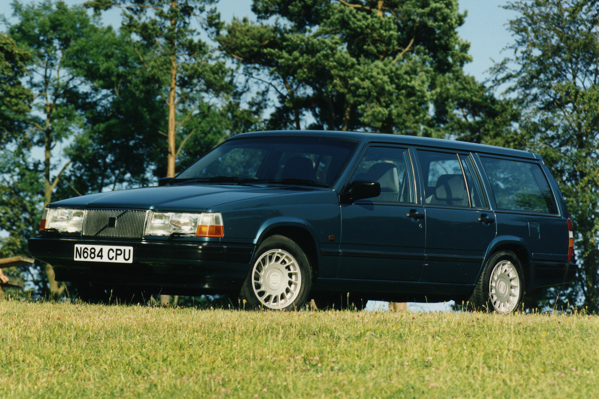
- Volvo's 40-year old upmarket estate defined the brand's values for Britain
- Strong and safe feeling cars with big windows and great visibility
- The '80s aesthetic is strong – 1980s for the music, 1880s for the antiques fair haul
Looking for a big family car with a large load area? Unsurprisingly the option is the same one you would have gone for when it was new. Volvo's brick-shaped 700 (facelifted as the Volvo 900 series pictured above) made its debut over 40 years ago and marked a new level of sophistication and luxury for the safety-focused Swedish marque.
Available with a broad selection of engines and gearboxes, this Volvo's solid presence, slim pillars and robust engineering mean it feels appreciably different from a modern car, but not unsafe or outclassed.
These are not the most economical option, but a well-maintained four-cylinder petrol Volvo 740 or 940 will go for hundreds of thousands of miles without needing a rebuild. The automatic gearboxes are crude and easy to maintain, whereas the manuals may need a clutch every 100,000 miles or so, particularly if the car has been used for towing or racing.
Look for rust in the sills, near jacking points and suspension mounts plus on the inner wings – and beware signs of breaking through around the windscreen frame and sunroof where fitted.
Mazda MX-5 – the best small roadster
.jpg?rmode=max&width=500)
- Reliable, efficient small roadster is easy to love and easy to live with
- Rust is becoming a serious issue for the MX-5 Mk1 and Mk2
- You may want to keep it off the road in winter...
The Mazda MX-5's influence in Britain cannot be understated. Capturing the essence of both the 1960s MGB Roadster and Lotus Elan, it launched in 1989 – a mere nine years after the last MGBs finally departed showrooms.
Predictions of the end of this cheap, small yet fun class of car had been rife and the '80s was dominated by hot hatches, but the little Mazda soon proved the experts wrong. Selling in huge numbers, it sparked rivals from BMW, Porsche, Honda and more.
Made to a much higher standard than its inspiration, the Mazda MX-5 is now a classic in its own right. Rust was always an issue and now cars are at the age when the repairs have been repaired and are due to be repaired again, meaning quite extensive work if you want a straight and original car. As such, the once-cheap MX-5 Mk1 is now moving towards five-figure sums for the very best and around £5000 for a usable, not bodged daily driver.
Go for the 1.8-litre with a manual gearbox and buy a hardtop if you want to use it all year round. Don't forget to clean the body drain holes and apply plenty of rustproofing. Maintenance is easy with plenty of specialists available and lots of aftermarket support and upgrades. You can set up an MX-5 to be a classic cruiser (including Japanese import automatics), or a trackday-sharp racer, so there really is an Mazda MX-5 for everyone.
Triumph Herald - best for learning restoration

- Affordable, fun mid-century classic is easy to repair and modify
- Capable of keeping up with modern traffic, wide choice of models
- A car that can be driven every day and make weekend maintenance fun
When considering classic cars you can use every day, having enough power to reach the speed limit along with sharp brakes and steering is only part of the equation. It's good to be able to fix them without waiting for parts, or needing to get into deep, complex repairs.
For that, Triumph's range of cars based on the 1959 Triumph Herald is an excellent option. They're compact and agile in town with great visibility and a turning circle that makes tight streets easy to navigate. They can be found with engines up to a 2.0-litre six-cylinder in Triumph Vitesse form while modifying and restoring is well documented.
Produced until 1971, the Triumph Herald is unusual in that it uses a separate chassis - a real benefit when restoring a car, as you can remove the body and make sure the structural bits are in excellent order.
With assistance for the heavy lifting, it's a quicker process than, say, replacing the heater matrix on a modern car. You can get two-door coupe, saloon and convertible (original or aftermarket, often identified by a T-top roll bar) plus a compact estate.
All share the same basic design with cute fins, a flip-front for easy access to the engine and a backbone chassis shared with the sporty Triumph Spitfire (produced until 1981 and a good source of upgrade parts) and Triumph GT6.
Use that access to keep up on mechanical and bodywork maintenance and a Triumph Herald or Vitesse will reward a little time learning and doing, with a lot of time enjoying drives in a distinctive car that will inspire great reactions wherever you go.
Lexus LS400 – best luxury saloon
- Toyota's luxury brand launched to universal praise thanks to the LS400
- Mercedes rival showed how to make a big car advanced and reliable
- Makes contemporary Jaguar and Bentley models look like kit cars
Launched the same year as the Mazda MX-5, the Lexus LS400 was almost as significant in terms of the pressure it put on existing high-end luxury brands.
More advanced than a Mercedes S-Class, more reliable than a BMW 7 Series and built with a precision and solidity 1980s Rolls-Royce and Bentley owners could only dream of, it shook things up in America as well as Europe.
Until recently the Lexus LS400 was something of a used bargain, but the number of owners thinking a cheap car means cheap parts has thinned the numbers. Even the best examples will cost less than the deposit on any comparable size and spec of new car plus Toyota is very good at supporting older cars.
Look out for advisories for rust, and avoid bad LPG conversions – most LS400s show their mechanical neglect in suspension, tyres and brakes first. A lot of JDM classic enthusiasts will chose modification over restoration, so avoid coilovers and aftermarket, harder bushes unless you specifically want that style.
A good Lexus LS400 will cost you a little more in fuel, but if you do long drives, the relaxing effect might make up for that as your stress reduces and the legendary Toyota reliability keeps breakdowns to a minimum.
Jaguar XK8 - best modern classic GT
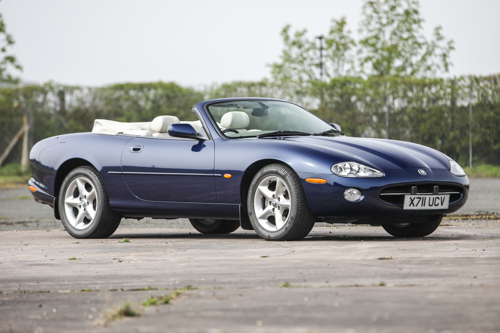
- They're not going to get any cheaper and the XJ-S is already expensive
- Choice of docile V8s or supercharged XKR, fastback or convertible
- Rust is the main concern – but not quite as bad as previous Jaguars
Few cars tap into the classic driver's mindset like a two-door fastback or coupé – but a lot of the old favourites such as the Ford Capri have become so rare and valuable, you're paying five figures to enjoy four cylinders and worrying about theft and damage every time it leaves the garage. Live a little, spoil yourself and go for the class above.
The original Jaguar XK8 bridged the gap between the much-missed Jaguar E-Type and Jaguar's XJ sporting saloons with a stylish coupé and convertible launched in 1996. Time revealed the award-winning V8 suffered problems with Nikasil-coated bores (as do many engines of the era), but later versions and the AJ34 don't share this weakness. Plus many cars had the engine replaced under warranty if problems occurred.
Sharing its foundations with the Aston Martin DB7, the Jaguar XK8 offers a lot of style for well under £5000 – shabby examples can be less than £2000 in road-legal and working order.
Don't expect the next MoT to be flawless without some pre-emptive action to tackle the common inner arch, sill and subframe rust. As with its predecessors, the Jaguar XK8 will endure a few years of undignified neglect before values rocket and you wish you'd bought one earlier – buy an XKR if you plan on investing in restoration.
Porsche 911 (996) - best classic supercar

- Affordable Porsche can be affordable to run as well, with care
- Specialists are as plentiful as the cars
- Built to be used, the 911 is a supercar you can drive every day
Recommending a Porsche 911 as a daily driver classic seems bold if you're thinking of classic, rust-prone, rear-engined and RWD air-cooled 911s. But in 1997 the 996 generation of Porsche 911 ushered in a new era for Porsche.
Marking the end of air-cooled engines, it shared engineering with a more affordable mid-engine roadster and showed the agile styling and engineering approach that would lead to the Porsche as we know it today. In 2004 it was given a facelift and refresh as the 997, mirroring the Boxster 987.
Now officially a Porsche Classic car alongside its sibling the Porsche 986 Boxster, the Porsche 911 (996) offers more power, more space and more drama than the budget roadster – but benefits from the parts-sharing and popularity of its mid-engined relative.
You can get a Porsche 996 for £10,000 - possibly even less with faults disclosed, but be wary of taking on abandoned projects. For that budget you will find higher mileage coupes and convertibles but Targas tend to be more expensive. Newcomers to 911s should choose the Carrera 4 all-wheel drive model, which tames the rear-engined layout somewhat.
If you get a broken one and take it to Porsche it will naturally cost a lot to repair even with the discounts offered by the classic programme. But if you get a good one, join the Porsche Club GB and use a recommended specialist you'll find the running costs and pre-emptive maintenance are not that different to a modern car.
Rust is rarely a significant issue unless the car has been damaged and repaired. Most mechanical problems, such as the IMS bearing, bore scoring and cooling system neglect, are well documented and avoided if you do some research before buying.
Secondhand spares and breakers are plentiful, too – helped by he number of Porsche Boxster parts that fit for trim and electrical systems. We'd suggest spending around £15,000 on a colour and trim you love with good history from a private sale. Overlooked engine or transmission problems could easily eat up that £5000 'saving' otherwise. In the long run it's hard to go wrong with a Porsche 911 as long as you stick with it.
Daily driving a classic car in 2025
If you want to drive a classic car on modern roads and in modern traffic, there's really no reason why you shouldn't. Average speeds away from the motorway are often lower while the state of Britain's roads makes the soft-sprung, large tyre approach of the past almost appealing in the face of sports suspension and low-profile tyres.
Life will be easier if you make sure you stay ahead of the maintenance and you'll be surprised what really makes a difference. You can step away from that cheap middle-of-Lidl welding kit, for a start. Here's how to truly make your 40-year old car as dependable as the day it was made.
1. Check all the rubber seals and drainage points
This is the origin for most issues on classic cars of all ages - water where it shouldn't be. On an older car it might mean stained and smelly trim, excess condensation to demist and a general feeling of funkiness. On a modern classic it can mean shorted out electrics and fried ECUs.
Your first job should be to make sure that water can get out of roofs, sunroof drains and scuttle panels as the manufacturer intended - then replace any seals or trims that aren't keeping it out in the first place.
This can be as simple as a £16 genuine lower windscreen seal preventing an ECU or footwell from filling with water and if it's failed after 20 years, your new one will last another 20.
2. Clean everything, then rustproof it
On any older car rust is going to be a problem – particularly if your daily driver is over 40 years old and you're taking advantage of the MoT exemption. It is strongly recommended to keep on getting the annual inspection done if you use your classic car daily in all weathers.
Wash the car regularly, especially in winter - and don't let mud and muck build up under the wheel arches, behind the bumpers or around the fuel filler and suspension. Regularly rinsing under the more accessible parts of the car can add years to its life alone.
For the best results give it a good clean in summer and get whichever rust proofing solution looks most appealing, then go to town with it. Bike chain wax or ACF50 can be good for protecting fastenings and suspension parts, but a good coating of waxoyl applied behind wheel arches, inside inner wings, and injected into windscreen frames and cavities such as sills can keep rust at bay or slow its progress.
.jpg?rmode=max&width=500&height=375)
3. Get the car tuned by an old-school mechanic
You won't find diagnostic ports and clever computers on many classics, but making them run well can make all the difference in fuel bills, performance and longevity. Find someone who can use a gas analyser and ignition tester properly to get the timing and fuel/air mixture right. If the car's performance shifts, let them see it again in case pieces are wearing out or the fuel quality has changed.
Stick to E5 super unleaded petrol to avoid damage to older fuel lines and components. If it's an older car, look into getting hardened valve seats installed if you do a high mileage. Lead substitutes for petrol are not always effective.
Top Tip: never get running or gearbox issues diagnosed without first checking all the vacuum pipes, gaskets and (where fitted) PCV and emissions systems are in good condition. Leaking vacuums and clogged crankcase ventilation can cause problems that only get worse when delicately balanced systems are adjusted to compensate.
4. Some modern advances are worth having
Yes, it's a classic car, but you don't need to use 40 year old brake and tyre technology. Get good quality, modern ones where possible and make sure your brakes are in good working order with recent flexible lines and fresh brake fluid.
Don't underestimate the impact of suspension wear on braking, either – worn dampers are easily overlooked as they degrade so slowly, you might just think the car always drove that way.
If the car is going to be used every day, in all weathers and traffic, there's no point in being precious about features that make it less safe or visible. 12 volt electrics, alternators, LED lighting where legal and appropriate – it can always be returned to standard if you've made an upgrade that works. If you don't, and someone doesn't see your car, there might not be anything left to restore.
5. Get a tracker, and be honest with your insurers
Most classic policies will allow agreed value but assume lower mileages than a modern car will be used for. Make it clear your car is your daily driver and that the cover is right for your use - which means commuting if you commute and business use if you do deliveries, visit clients on site, or use it to travel to clients yourself. The premium may go up, but if there's a claim you'll have far less hassle than if you've been less than honest.
With some classics there is a high risk of theft, particularly Minis and many Fords. Low-cost self-install trackers are available, a disklok or similar steering and gear/brake lock will dissuade joyriders and parking near CCTV, in busy areas where people know your car is better than leaving it on a random street or in a train station car park regularly.
Above all, you bought your classic daily driver to use and enjoy. If it's causing you stress, don't be afraid to put it to one side and try again when it's easier - either storing it if repairs are needed, or selling it and saving the money for a better time or example.
However, experience suggests going for the nicest, lowest-mileage example of a much-loved car can be stressful in itself when trying to share space with supermarket shoppers, school runs and commuters. Well-maintained yet shabby means shrugging off the stonechips and trolly dings of an uncaring world rather than wrapping your classic car in cotton wool.
Classic cars in Clean-Air Zones and ULEZ
For many owners, using a classic for everyday commuting and driving can mean an increased risk of crossing emissions controlled zones such as CAZ or ULEZ. There's no way a classic car will meet the low CO2 demands and even if it does, the paperwork never recorded such levels, so what can you do?
First of all, only ULEZ presents a truly unpleasant scenario. Anywhere inside of the M25 will attract a penalty. For this region alone, the 40 year historic exemption is a must – stick to early '80s classics and if you want a bargain snap up a classic approaching 40 and have it restored and stored. To qualify the car must have had the tax class changed to 'historic'.
Good news, though, if you do fancy an early 2000s car – a lot of 2001-on petrol models do not attract ULEZ, such as the 2001 Mercedes SLK 200K auto. Got a V-reg 2000 model instead of that 51-plate? Time to pay up. Before buying a car, check the TfL website to see if it will be exempt ULEZ but be aware that some cars may show incorrect rates if subject to a recent number plate transfer.
In regions where CAZ does affect privately owned passenger cars, such as Bristol, the area excluded is relatively small and easily avoided.
Public transport is your friend, just as it was when some of these cars were made. The 40 year exemption applies for historic vehicles but you can make your own judgement if the extra cost works out as better value compared with infrequent payments or just parking up and using alternative transport in the very centre.
Historic LEZ exemption for classics over 30 years old in Scotland
Good news for Scottish residents. In Scotland the low emission zones – which are an outright ban with penalty, rather than pay to drive through – consider a vehicle over 30 years old historic. That means some early 90s models can happily drive through the centre of Edinburgh without fear.
You don't need to do anything to take advantage of this exemption, if the car is UK registered and has no question over its identity or specification, it will automatically be recognised and not attract a penalty.

.JPG?rmode=max&width=500)